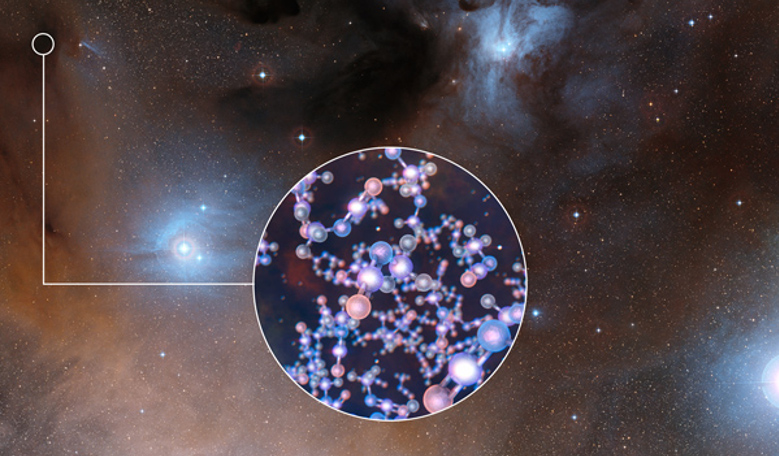Using ALMA, astronomers have detected a complex prebiotic molecule that is a key ingredient to life, around three solar-type protostars.
This chemical building block of life is methyl isocyanate, a complex organic molecule containing carbon, hydrogen, nitrogen and oxygen atoms in the chemical configuration CH3NCO. Intriguingly, this is not the first complex molecule to be found around the triple protostar system known as IRAS 16293-2422.
In 2012, another group of researchers also using ALMA, discovered the simple sugar glycolaldehyde - a highly reactive compound that can help form ribose, a central constituent of ribonucleic acid (RNA).
Add this to the right mix of conditions, which in the case of IRAS 16293-2422 is a trio of protostars with the same masses as the Sun, coupled with conditions that are described as well suited for Earth-sized planets to form, then bingo, an ideal laboratory in which to study how life might have formed in our Solar System, and perhaps elsewhere.
“We are particularly excited about the result because these protostars are very similar to the Sun at the beginning of its lifetime. By finding prebiotic molecules in this study, we may now have another piece of the puzzle in understanding how life came about on our planet,” said Rafael Martín-Doménech at the Centro de Astrobiología in Madrid, Spain, and Víctor M. Rivilla, at the INAF-Osservatorio Astrofisico di Arcetri in Florence, Italy.
Martín-Doménech and Rivilla share the discovery with another team; Niels Ligterink at the Leiden Observatory in the Netherlands and Audrey Coutens at University College London, United Kingdom. Along with a spectrographic analysis of the protostar’s light to determine the chemical constituents around IRAS 16293-2422, both teams conducted further tests in order to constrain their analysis.
Martín-Doménech’s team chemically modelled gas-grain formation of methyl isocyanate, while Ligterink's team showed that the molecule can be formed at extremely cold interstellar temperatures, down to 15 Kelvin (–258 degrees Celsius), using cryogenic ultra-high-vacuum experiments in their laboratory in Leiden.
"Besides detecting molecules we also want to understand how they are formed. Our laboratory experiments show that methyl isocyanate can indeed be produced on icy particles under very cold conditions that are similar to those in interstellar space. This implies that this molecule, and thus the basis for peptide bonds, is indeed likely to be present near most new young solar-type stars,” added Ligterink











